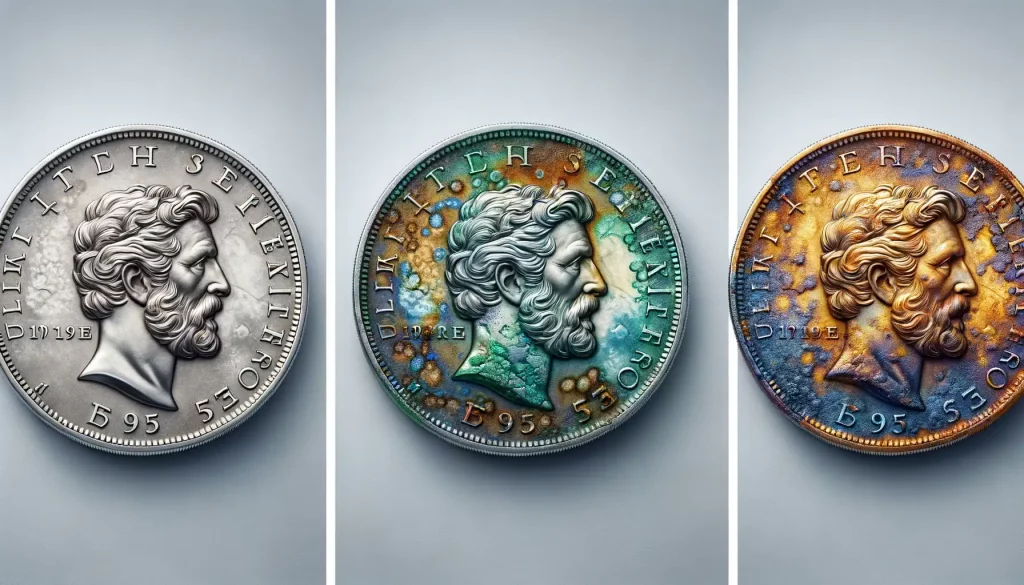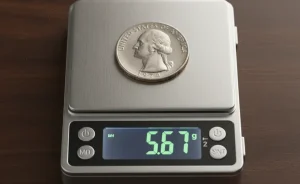Understanding the Importance of Coin Color and Patina
The Hidden Stories in a Coin’s Color
Imagine holding a coin from centuries ago—its surface isn’t just silver or gold anymore, but a world of hues: soft greens, fiery oranges, maybe a smoky gray that seems to whisper tales of countless hands and historic events. The *color* of a coin is so much more than just its appearance; it’s a glimpse into its journey.
Coins with a natural, aged patina often showcase breathtaking shades caused by oxidation or exposure to the environment. These transformations don’t degrade their value; rather, they elevate them, adding an aura of authenticity. For example, the bluish-green glow on ancient copper coins can be a sign of age and rarity. On the other hand, if you spot a shimmering rainbow effect on silver coins, known as “toning,” you’re likely looking at something collectors dream about.
Every shade, every glint tells a story. Sometimes, modern cleaning techniques strip coins of their character, leaving you with something shiny but soulless—like scrubbing away history itself. That’s why collectors cherish these natural tones as they remind us of where the coin has been.
Why Patina Is a Collector’s Best Friend
Patina is more than just pretty tarnish; it’s a badge of honor for many coins. It acts like a fragile time capsule, protecting the surface beneath while recording its interactions with the world. Here’s why it matters:
- Historical authenticity: A genuine patina can prove a coin’s age and origin, which means fewer doubts and more value for your collection.
- Unrepeatable patterns: The way patina forms is unique; no two coins will age in quite the same way, making each piece one-of-a-kind.
Collectors often find joy in spotting coins with beautifully preserved tones or intriguing discolorations caused by storage in leather pouches, old wooden chests, or even underground hoards. These aren’t flaws—they’re treasures!
How Color and Patina Develop on Coins
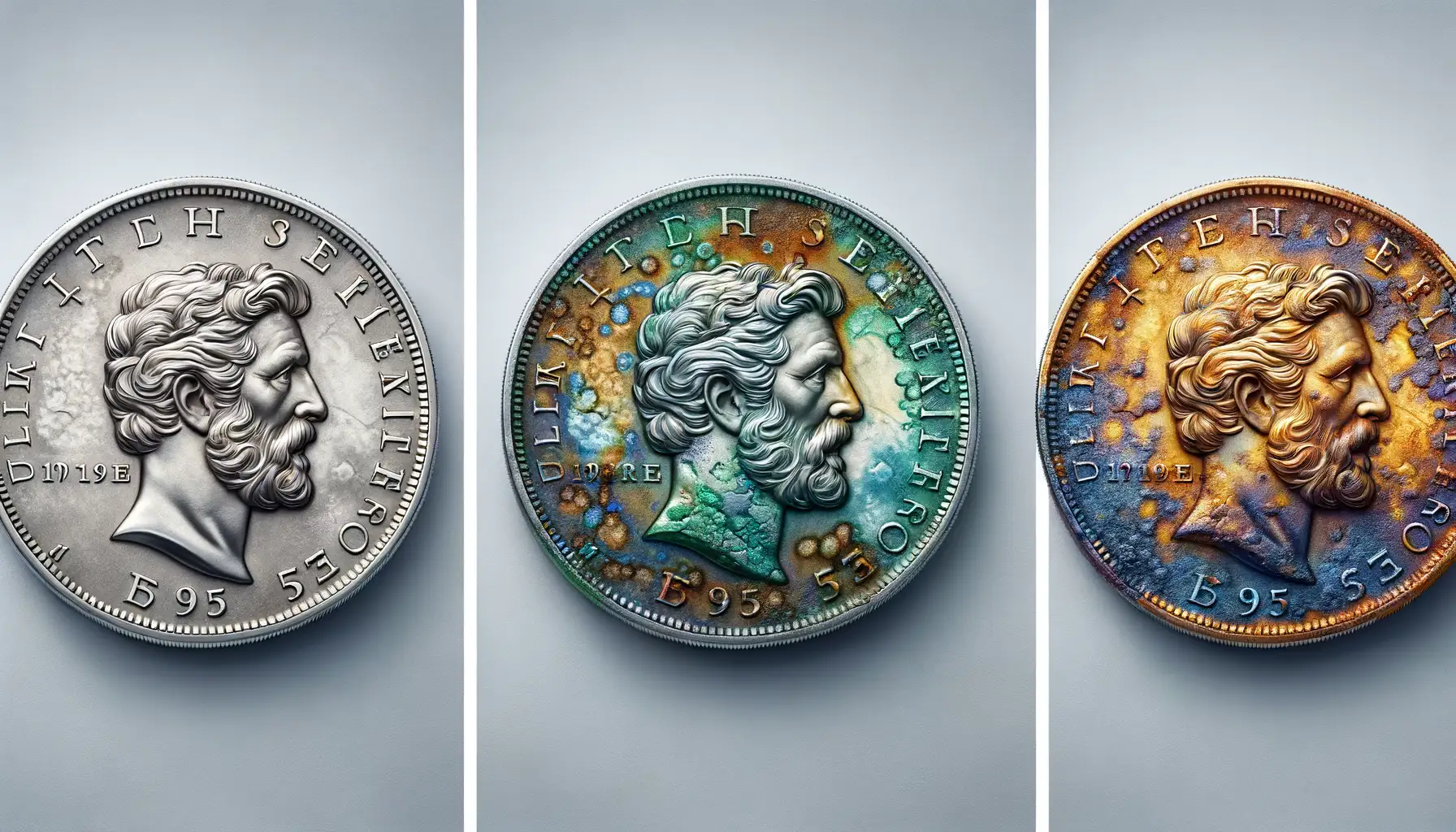
The Dance of Time: How Coins Gain Their Unique Hues
Coins, like people, carry their stories on the surface. The colors and patinas that adorn them are no accident—they’re the result of a fascinating dance between metal, time, and the elements.
When a coin is exposed to air, moisture, or even just the oils from human touch, it begins to transform. Copper coins might develop rich shades of green or brown as oxidation works its magic. Silver coins? They often take on dreamy hues of blue or soft lavender. And let’s not forget gold—while more resistant to tarnish, it can still pick up subtle tones from its environment, creating personality in each piece.
- Stored in a humid attic? Expect accelerated aging with unpredictable streaks.
- Handled over generations? Skin oils leave behind unique fingerprints in the form of color shifts.
- Even storage materials, like certain coin albums, can impact the way patina evolves over years.
The patina isn’t just decoration—it’s history clinging to the coin, whispering tales of where it’s been. And for collectors, these whispers are irresistible.
Evaluating Patina and Color in Coin Grading
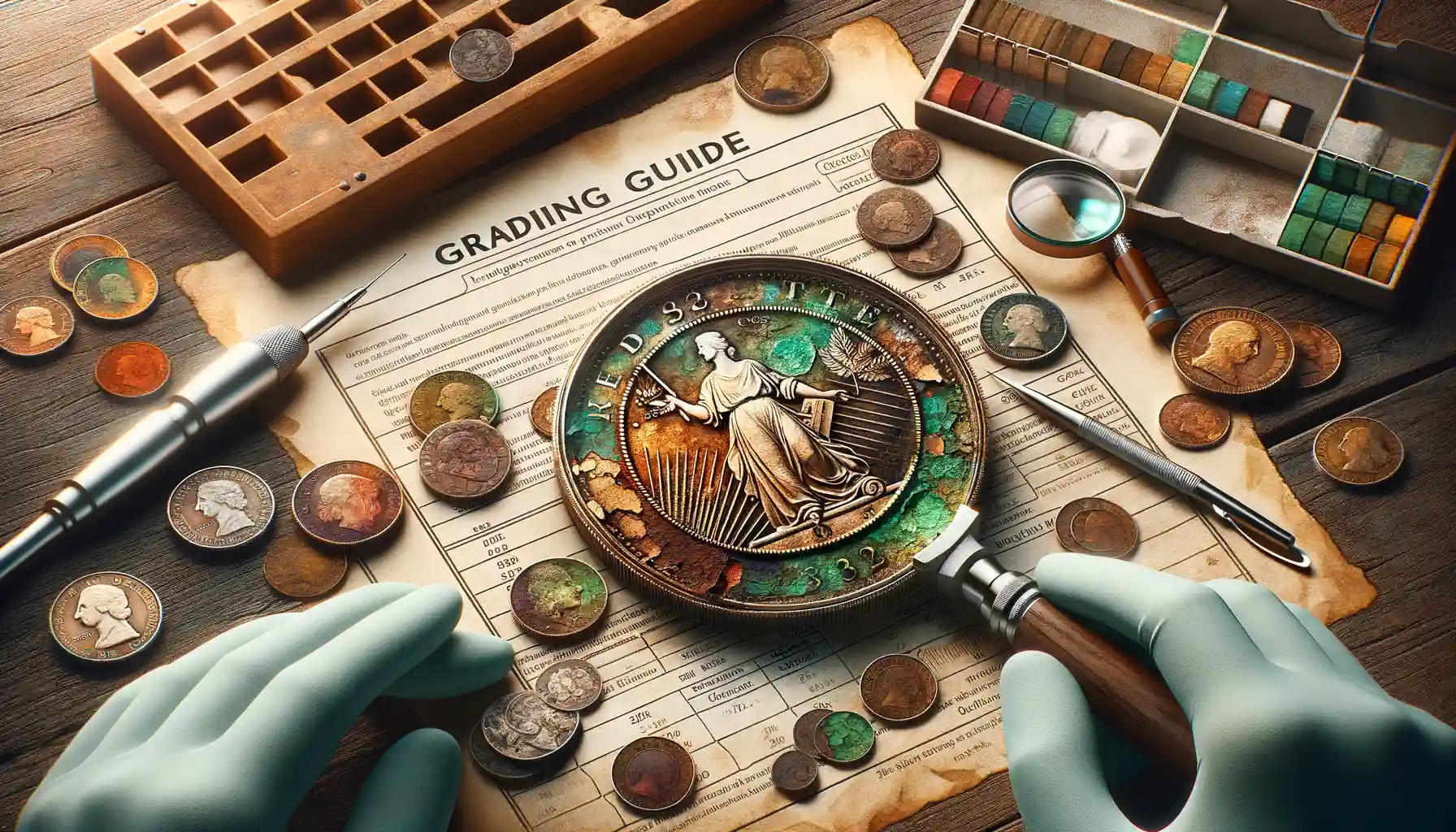
What Makes Patina and Color So Crucial in Coin Grading?
Have you ever marveled at a coin’s stunning hues—those captivating streaks of amber, emerald, or smoky gray? That’s not just random beauty; it’s the coin’s unique story etched in color and patina. In the world of grading, these elements are like a coin’s fingerprint—impossible to replicate, yet essential for determining authenticity and value.
Grading experts look at color with an artist’s eye. Is the tone natural? Does it have that “lived-in” charm, or does it scream artificial tampering? A well-developed patina, formed over decades (or centuries), can elevate a coin from “nice” to “museum-worthy.” Take, for example, a copper penny: A rich, chocolate-brown patina indicates proper aging, while shiny or overly bright surfaces may suggest cleaning—which is a big no-no for collectors.
- Uniformity: Natural patina often develops evenly, without sharp contrasts or streaks.
- Depth: Vibrant yet subtle tones, like blues or reds, in silver coins signal authenticity.
Patina and color aren’t just aesthetics; they’re like time travel in your pocket. When evaluating, trust both your instincts and the details only history could create.
Tips for Preserving Coin Patina and Color
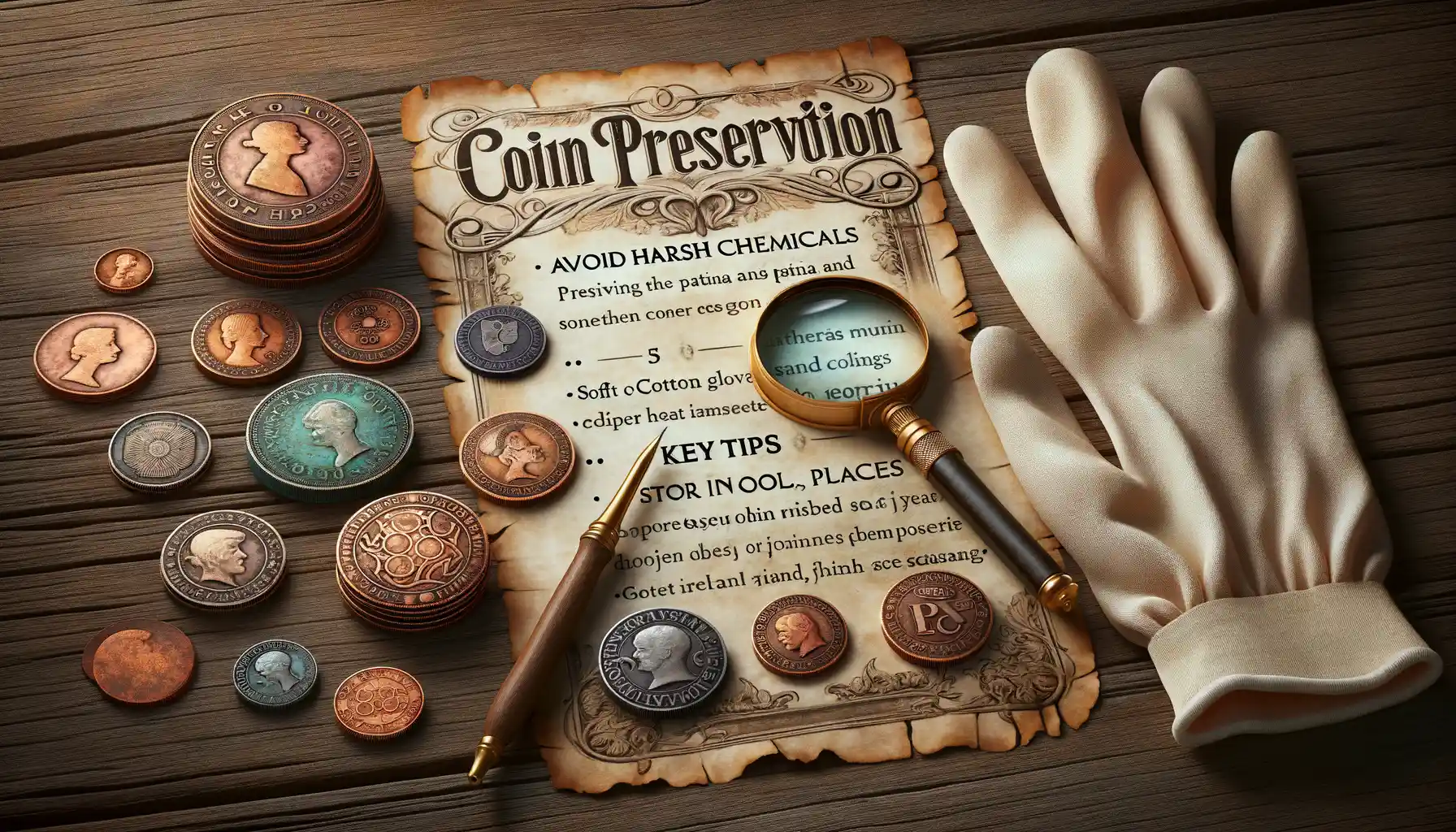
How to Keep Your Coins as Nature (and Time) Intended
Imagine this: a coin untouched by time, its hues whispering stories of emperors, revolutions, and long-forgotten trades. The natural patina and vibrant colors on your coins are more than just a surface detail—they’re history etched in metal. Want to help your treasures keep their character intact? Let’s dive into the care they deserve.
- Handle with care: Always hold coins by the edges to avoid leaving fingerprints or oils on the surface. Even clean, dry hands carry enough residue to alter delicate patinas over time.
- Avoid over-cleaning: Sure, shiny sounds tempting, but scrubbing away that aged look can erase decades—sometimes centuries—of history. Less is more!
Create the Right Environment for Preservation
Coins thrive in a space as stable as their long-standing value. Store them in acid-free folders or Mylar flips to prevent chemical reactions. Avoid direct sunlight and humid basements—these can darken copper coins or cause dreaded green verdigris on bronze.
Pro tip: Add silica gel packets to your storage box. They’re like little guardians against moisture! Keeping your coin collection preserved is part science, part art, and entirely rewarding.
The Role of Color and Patina in Coin Value
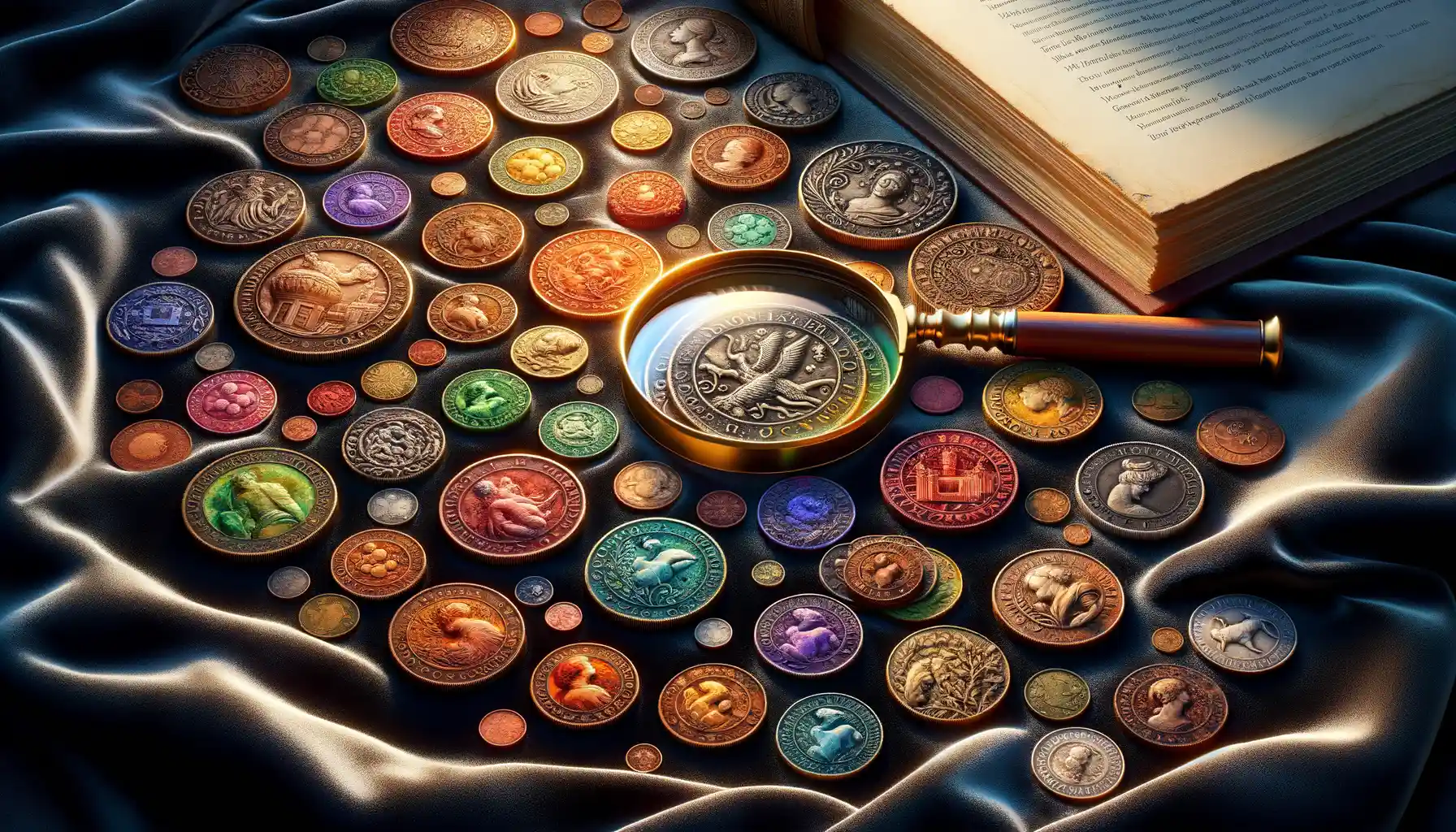
The Enchantment of Tones on Coins
What if I told you that the subtle hues on a coin’s surface could tell tales as ancient as time? The magic of color and patina lies in how they transform a simple metal disk into a treasure filled with personality, history, and—yes—value. Imagine the fiery orange glow of a copper coin or the iridescent play of blues and purples on silver. These aren’t just random splashes of color; they’re whispers of chemistry and years gone by.
Collectors don’t just see coins; they feel them. A richly toned patina can evoke awe, striking the perfect balance between beauty and antiquity. In auctions, a coin with an exceptional natural patina often fetches *much* higher bids. Let’s face it—those shimmering rainbows of oxidation bring out the “Wow!” factor.
- A vibrant, natural color enhances rarity and desirability.
- Artificial toning? That’s the collector’s kryptonite—authenticity is everything.
Coins with stunning patinas often become centerpieces of collections. Why? Because their unique shades act like fingerprints, turning each piece into something utterly irreplaceable. Now, isn’t that enchanting?

